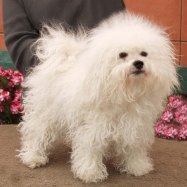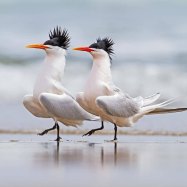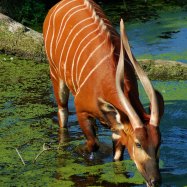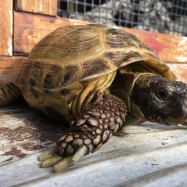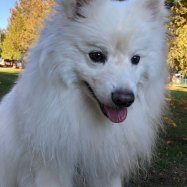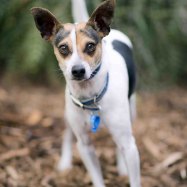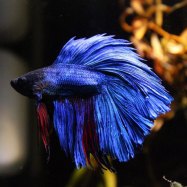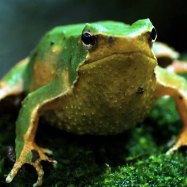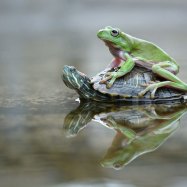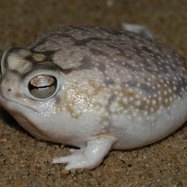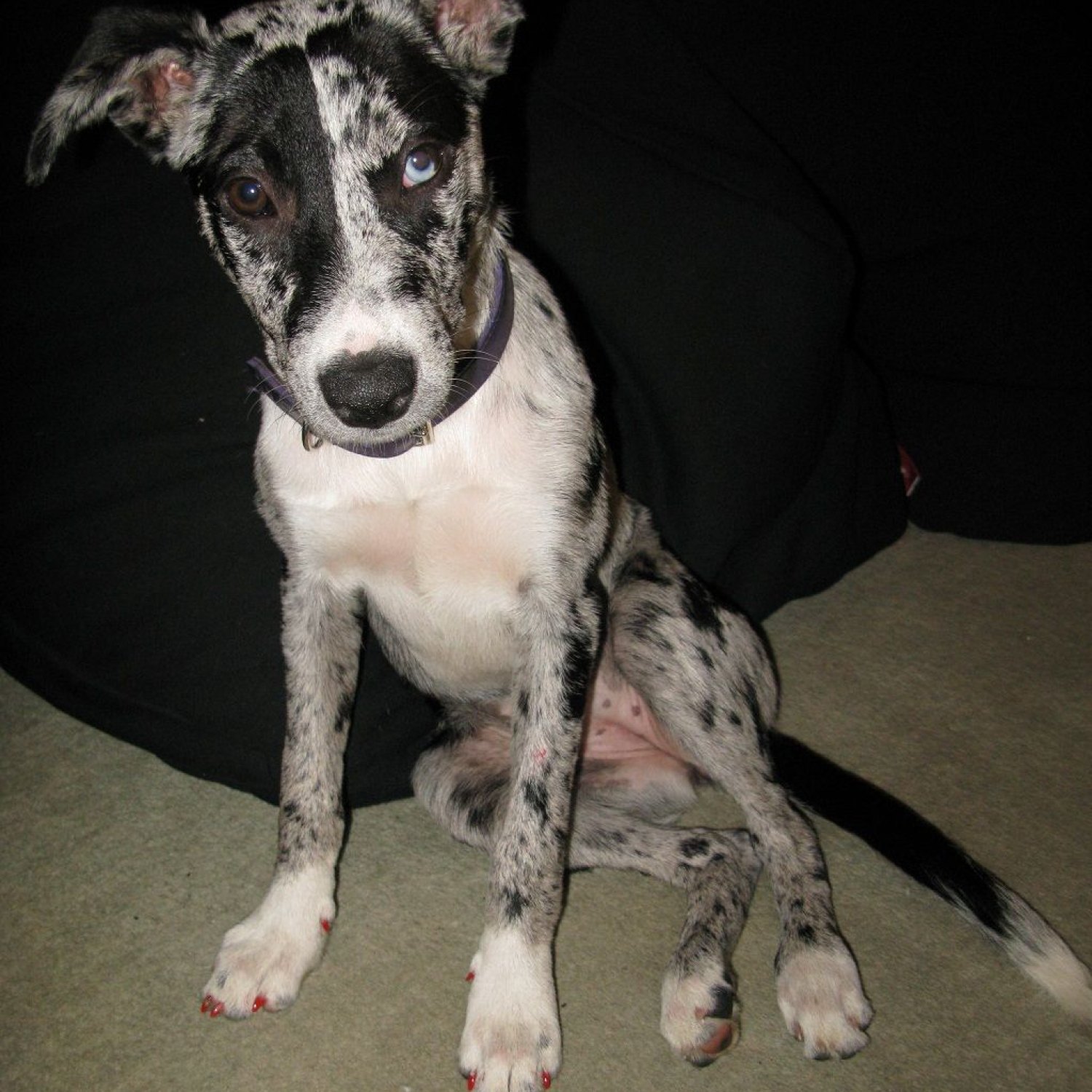
Koolie
45-55 cm
The energetic Koolie, a medium-sized and muscular dog, is a beloved breed in Australia. Standing at 45-55 cm in length, they are known for their intelligence and herding abilities. Being part of the Canidae family, they are excellent companions and working dogs. #Koolie #Australia #Canidae #dogs
Animal Details Summary:
Common Name: Koolie
Kingdom: Animalia
Habitat: Varies, including grasslands, forests, and mountains
The Koolie: Australia's Versatile and Loyal Canine Companion
When one thinks of Australia, images of kangaroos, koalas, and the vast outback often come to mind. However, one of the most beloved and highly adaptable animals in Australia is the Koolie. These canines have been an integral part of Australian farming and cultural heritage for over 160 years. With their intelligence, strength, and unwavering loyalty, it's no surprise that the Koolie has become a favorite among dog owners in the country Koolie. In this article, we will delve deeper into the characteristics of this remarkable breed and explore what makes them such special companions.Origins and Classification
Scientifically known as Canis lupus familiaris, the Koolie shares its scientific name with its wild ancestor, the grey wolf. However, this breed has evolved to become a dedicated and loyal domesticated dog. They are classified under the animal kingdom, phylum Chordata, class Mammalia, and order Carnivora. Within the family Canidae, the Koolie is classified as a working dog breed, known for their herding abilities and intelligence. They are closely related to other herding breeds like the Australian Cattle Dog, Border Collie, and the Australian Kelpie.Habitat and Distribution
Due to their adaptable nature, Koolies can thrive in various habitats, including grasslands, forests, and mountains. However, their historical and most common habitat is the vast Australian outback. The breed is believed to have originated from the New South Wales and Victoria regions in Australia Knight Anole. Currently, they can still be found throughout the country, with some populations also present in the United States, Canada, and the United Kingdom.Physical Attributes
The Koolie is a medium-sized breed with a muscular build. They have a broad and powerful chest, which allows them to run and work tirelessly for long periods. Their body length ranges from 45-55 cm, making them compact and agile. This size is perfect for their job of controlling livestock, as it allows them to move swiftly and efficiently. Their coat is short and consists of various colors and patterns, including merle, black, red, and blue. This diversity in color makes every Koolie unique and adds to their charm.Feeding and Adaptability
Koolies are known to have an efficient metabolism, which enables them to work for extended periods without getting fatigued quickly. As an omnivorous breed, they can thrive on a diet that includes both meat and plant-based ingredients. This has made them a valuable asset for farmers, as they can be fed with whatever food is available on the farm. Due to their high adaptability, Koolies can easily adjust to different climates and diets, making them an ideal choice for farmers living in different regions of Australia.The Role of Koolies in Australia's Farming History
The Koolie has been an essential part of Australian farming history since the early 1800s. Farmers in Australia needed an intelligent and highly adaptable dog that could assist them in managing their livestock. This is where the Koolie's herding abilities and unwavering loyalty made them the perfect choice for the job. They were used to control and herd different types of livestock, including sheep, cattle, and goats.With Australia being known for its vast and challenging terrain, Koolies became a vital asset in managing livestock in remote and rugged areas. They were trained to run tirelessly alongside horseback-riding farmers, rounding up and controlling the movements of sheep and cattle. Their high energy levels and fierce protectiveness made them efficient in guarding flocks from predators like dingoes.
Aside from their role in farming, Koolies were also used as messenger dogs during World War I. They were trained to carry messages between soldiers on the battlefield, further showcasing their intelligence and trainability.
The Koolie as a Companion
In addition to their impressive history as working dogs, Koolies have also become beloved companions in Australian households. Their high intelligence, trainability, and affectionate nature make them ideal family pets. They are known to be great with children and other pets, making them a valuable addition to any household.One of the most striking features of the Koolie is their unwavering loyalty. This trait makes them fiercely protective of their owners and makes them excellent watchdogs. They are always ready to defend their family, making them an ideal choice for those looking for a loyal and protective canine companion.
The Importance of Preserving the Koolie Breed
Despite their long history and significance in Australian culture, the Koolie breed faced a decline in population in the late 1900s. With advancements in farming technology, the need for herding dogs decreased, leading to a decrease in demand for Koolies. This led to a decline in their numbers, and the breed was at risk of disappearing.Fortunately, dedicated breed enthusiasts and farmers recognized the value of preserving this unique breed, and efforts were made to increase their population. Today, the Koolie is recognized as Australia's National Working Dog, and breeders and organizations are working to ensure its preservation for generations to come. By educating the public about the breed's value and promoting responsible breeding practices, the future of Koolies looks bright.
Conclusion
In conclusion, the Koolie is a remarkable and highly versatile breed that has played a significant role in Australia's history and culture. From their origins as working dogs to becoming beloved companions, this intelligent and loyal breed has captured the hearts of many. With their exceptional adaptability, unwavering loyalty, and historical significance, it's no wonder that the Koolie is considered an invaluable part of the Australian community. Let us continue to celebrate and preserve this amazing breed for generations to come.

Koolie
Animal Details Koolie - Scientific Name: Canis lupus familiaris
- Category: Animals K
- Scientific Name: Canis lupus familiaris
- Common Name: Koolie
- Kingdom: Animalia
- Phylum: Chordata
- Class: Mammalia
- Order: Carnivora
- Family: Canidae
- Habitat: Varies, including grasslands, forests, and mountains
- Feeding Method: Omnivore
- Geographical Distribution: Australia
- Country of Origin: Australia
- Location: Australia
- Animal Coloration: Various colors and patterns
- Body Shape: Medium-sized and muscular
- Length: 45-55 cm
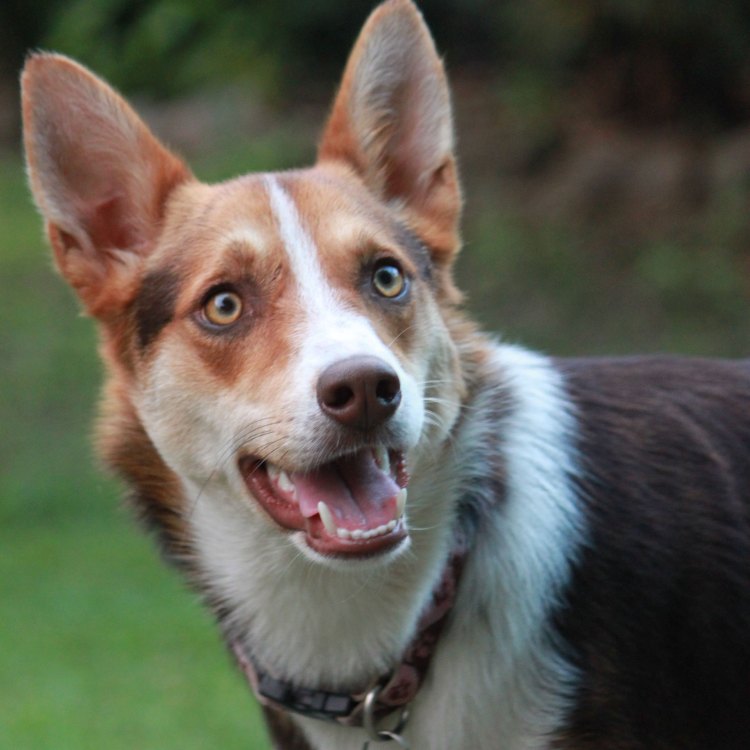
Koolie
- Adult Size: Medium
- Average Lifespan: 12-15 years
- Reproduction: Sexual
- Reproductive Behavior: Breeding occurs once a year
- Sound or Call: Barking
- Migration Pattern: Non-migratory
- Social Groups: Pack
- Behavior: Energetic, intelligent, and trainable
- Threats: None
- Conservation Status: Not Listed
- Impact on Ecosystem: Keeps populations of prey animals in check
- Human Use: Working dog, herding livestock
- Distinctive Features: Elongated body, double coat
- Interesting Facts: Koolies are highly versatile herding dogs and excel at obedience and agility trials.
- Predator: None
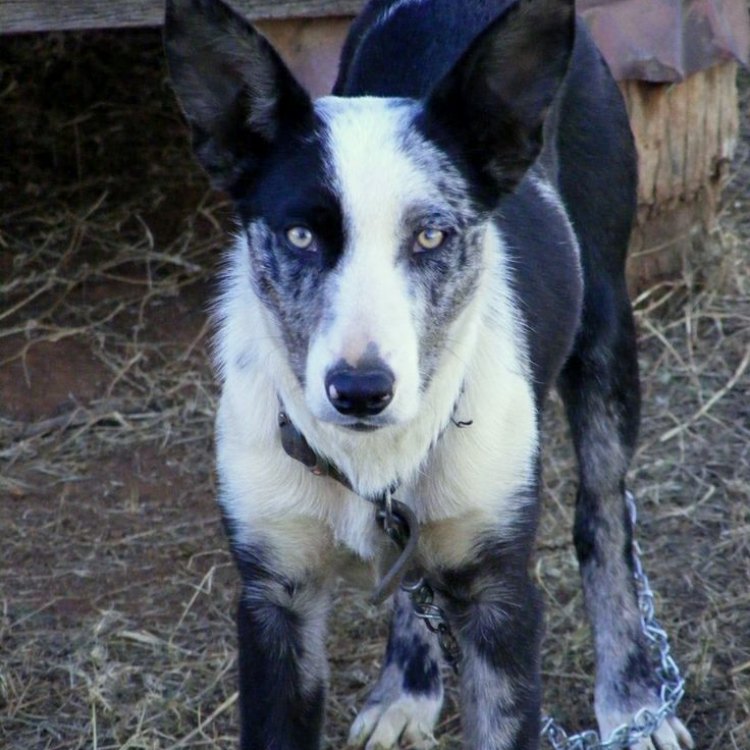
Canis lupus familiaris
The Unique and Versatile Koolie: A Hidden Gem Among Herding Dogs
When one thinks of herding dogs, breeds like the Australian Cattle Dog, Border Collie, and German Shepherd may come to mind. However, there's a lesser-known herding breed that deserves some recognition – the Koolie.Often referred to as the "Australian Koolie," this medium-sized breed may not have the same popularity as its counterparts, but it holds its own unique features and qualities that make it a hidden gem among herding dogs.
So, let's take a closer look at the Koolie – from its physical appearance to its behavior, impact on the ecosystem, and human uses – and discover why this breed should not be overlooked PeaceOfAnimals.Com.
Physical Appearance
The Koolie is a medium-sized dog, standing at a range of 17-24 inches and weighing 25-45 pounds when fully grown. They have an elongated body, which gives them a unique and distinctive appearance. Their heads are proportionate to their body, and they have alert, almond-shaped eyes that can come in various colors, including blue, brown, and amber.
One of the most striking features of a Koolie is its double coat, which is short, smooth, and weather-resistant. They come in a variety of colors, including black, blue merle, red, and chocolate, and their coat requires minimal grooming, making them low maintenance.
Behavior and Temperament
The Koolie is known for its energetic, intelligent, and trainable nature. They have a strong herding instinct and are incredibly agile, making them excellent working dogs. These traits also make them great companions for active families who enjoy outdoor activities like hiking, running, or playing fetch.
Despite their high energy levels, Koolies are typically well-mannered and have a docile nature Kangaroo. They are highly social and thrive in environments where they can interact with humans, making them loving and loyal companions.
Reproduction
Koolies are sexual reproducers and usually reach sexual maturity at around six to twelve months of age. Breeding occurs once a year, and females typically give birth to a litter of six to eight puppies. Koolies make excellent mothers and are attentive to their puppies' needs.
Social Groups
In the wild, Koolies typically live in packs consisting of a dominant pair and their offspring. However, in domestic settings, Koolies adapt quickly to being a part of the human "pack" and bond strongly with their owners.
These highly social animals function well in groups and make excellent companions for families with children or other pets. Their loyal and protective nature also makes them good watchdogs.
Sound and Call
When it comes to communication, Koolies are not as vocal as some other breeds. However, when herding, they use a range of barks to communicate with their human or animal counterparts. This vocalization is a key aspect of their herding behavior and helps them direct the animals they are working with effectively.
Migration Pattern
The Koolie is a non-migratory breed, meaning they do not have a particular migration pattern. This trait makes them well suited to domestic life as they do not have a natural instinct to roam or wander.
Threats and Conservation Status
One of the unique features of Koolies is that they have no known threats in the wild. They are not listed under any endangered or vulnerable species lists, and their population is currently stable.
However, as with any breed, responsible breeding practices should be followed to maintain a healthy and genetically diverse population. This includes regular health screenings and careful selection of breeding pairs.
Impact on the Ecosystem
Koolies have been used for centuries as herding dogs, and their impact on the ecosystem is significant. By working closely with farmers and ranchers, Koolies help in keeping populations of prey animals, such as sheep and cattle, in check. This helps maintain a balance in the ecosystem and prevents overgrazing and potential damage to the land.
Moreover, Koolies' herding instincts and high energy levels also make them great candidates for sports like obedience and agility trials. Their presence in these events helps promote responsible dog ownership and fosters a deeper connection between humans and animals.
Human Use
First and foremost, Koolies are working dogs and excel at herding livestock. They are versatile and can adapt to different farm environments, making them highly sought after by farmers and ranchers. Their intelligence and trainability also make them suitable for other jobs, such as search and rescue, therapy dogs, and even as service dogs for people with disabilities.
Apart from their working abilities, Koolies also make excellent pets for active families. As mentioned earlier, their energetic and trainable nature makes them great companions for outdoor activities. With proper training and socialization, they can also get along well with other pets and make loving and loyal family dogs.
Interesting Facts
Koolies have a rich history and many interesting facts surrounding their breed. For instance, Koolies originated in Australia, where they were first bred to work alongside the original Australian Kelpies. They were also used to crossbreed with other breeds, resulting in the Australian Cattle Dog and the Australian Stumpy Tail Cattle Dog.
Moreover, Koolies are highly versatile herding dogs and excel at obedience and agility trials. They hold many records and titles in these events and continue to be recognized for their impressive abilities.
Predators
While Koolies may not have any known predators in the wild, they still require vigilant care and protection in domestic settings. This includes proper fencing and supervision to prevent accidents or conflicts with other animals.
In Conclusion, the Koolie is a hidden gem among herding breeds. Their unique features, including their elongated body and double coat, make them stand out in appearance, while their energetic, intelligent, and trainable nature sets them apart in behavior. They have a significant impact on the ecosystem and are highly valued by farmers and ranchers for their herding abilities.
Koolies are also versatile and excel in various jobs, like herding, search and rescue, and even as family pets. It's no wonder they are becoming increasingly popular among dog lovers worldwide. So, the next time you come across a Koolie, remember to give them the recognition they deserve as the hardworking and lovable herding dogs they are.
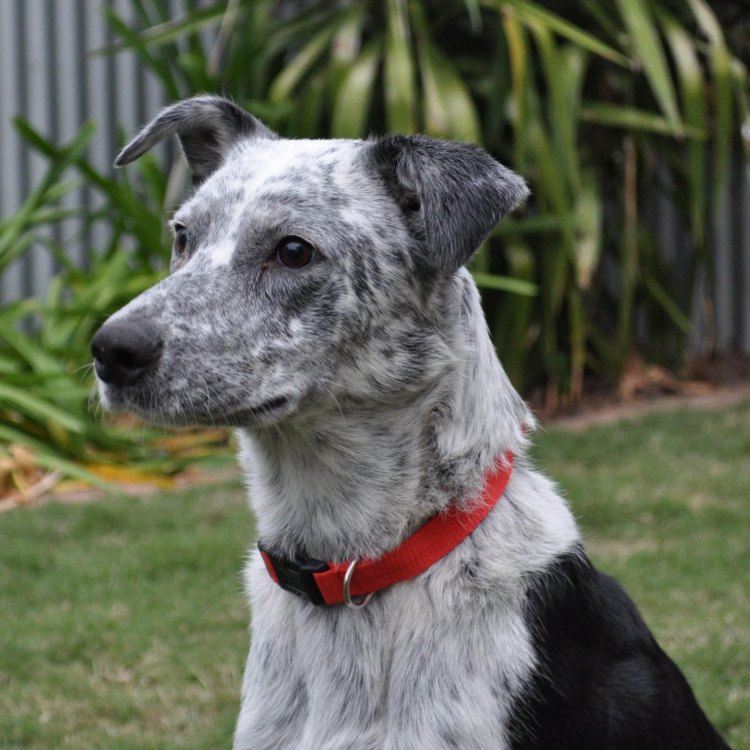
The Koolie: Australia's Versatile and Loyal Canine Companion
Disclaimer: The content provided is for informational purposes only. We cannot guarantee the accuracy of the information on this page 100%. All information provided here may change without prior notice.

